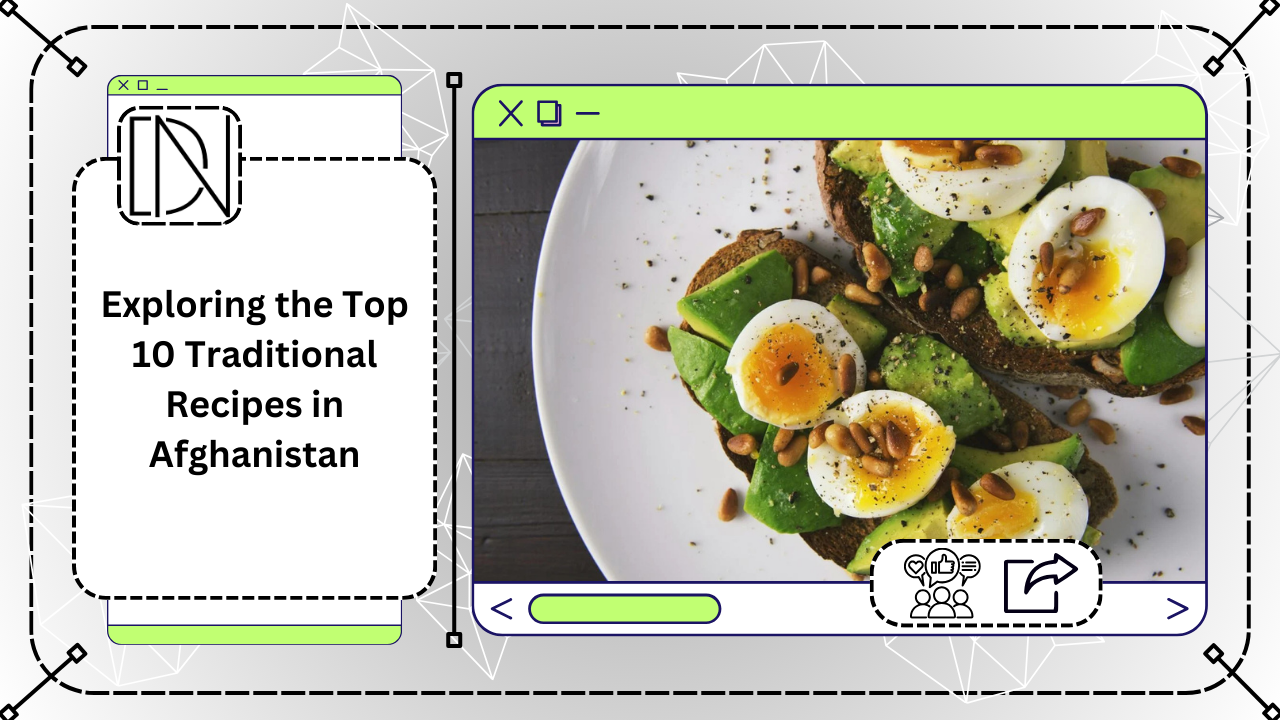Introduction to Afghan Cuisine
Afghan cuisine is a vibrant and diverse representation of the country’s rich cultural heritage, shaped by centuries of history and influenced by neighboring regions such as Persia, India, and Central Asia. The culinary traditions of Afghanistan reflect the nation’s geographical location at the crossroads of these ancient civilizations, resulting in a unique blend of flavors, ingredients, and cooking techniques.
Central to Afghan cuisine is the use of fresh, local ingredients. The country’s varied climate and fertile land provide an abundance of produce, including fruits, vegetables, nuts, and grains. Staples such as rice, wheat, and barley form the foundation of many dishes, while an array of spices like saffron, coriander, and cardamom add depth and complexity to the flavors. The importance of fresh ingredients cannot be overstated, as they are integral to the authenticity and taste of Afghan food.
Traditional cooking techniques are another hallmark of Afghan cuisine. Slow-cooking methods, such as simmering stews and braising meats, are commonly employed to enhance the flavors and tenderness of the ingredients. Bread, a staple in Afghan households, is often baked in tandoor ovens, which impart a distinct texture and taste. These techniques have been passed down through generations, preserving the culinary heritage of Afghanistan.
Afghan cuisine is characterized by a diverse range of dishes that cater to various tastes and preferences. From the savory flavors of kebabs and mantu (dumplings) to the aromatic rice dishes like qabuli pulao, Afghan food offers something for everyone. Vegetarian options are also plentiful, with dishes like borani banjan (eggplant with yogurt) and ashak (leek-filled dumplings) showcasing the versatility of the cuisine.
Understanding the historical and cultural significance of Afghan cuisine provides a valuable context for exploring the specific recipes that define this culinary tradition. The following sections will delve into the top 10 traditional recipes in Afghanistan, offering insights into the ingredients, preparation methods, and cultural importance of each dish.
Afghan cuisine is a rich tapestry of flavors and traditions, reflecting the diverse regions and historical influences of the country. Here, we explore ten iconic dishes that form the cornerstone of traditional Afghan cooking.
Kabuli Pulao
Kabuli Pulao is often regarded as Afghanistan’s national dish. This savory rice dish features basmati rice cooked with chunks of lamb, raisins, and julienned carrots, all spiced with a blend of cardamom, cloves, and cumin. The dish’s distinctive flavor comes from the lamb broth used to cook the rice, making it a hearty and aromatic meal. Kabuli Pulao is typically served on special occasions and is a favorite at festive gatherings.
Mantu
Mantu are delicate dumplings filled with spiced ground beef or lamb, onions, and garlic. These dumplings are traditionally steamed and served with a garlic-yogurt sauce and a topping of split peas in a tomato-based sauce. Mantu is often enjoyed as a starter or as part of a larger meal during family feasts.
Bolani
Bolani is a popular Afghan flatbread stuffed with various fillings such as potatoes, lentils, pumpkin, or leeks. The stuffed dough is then pan-fried until crispy. Bolani is often served as a snack or appetizer, accompanied by yogurt for dipping. Its versatility and simplicity make it a beloved dish in Afghan households.
Korma
Korma is a slow-cooked stew made with meat (usually lamb or chicken), vegetables, and a rich, spiced sauce. The key ingredients often include onions, garlic, ginger, tomatoes, and a mix of spices such as turmeric and coriander. This comforting dish is usually served with naan or rice.
Qabili Palau
Similar to Kabuli Pulao, Qabili Palau serves as a staple in Afghan cuisine. This dish combines rice with lamb, raisins, and carrots, but also adds nuts like almonds and pistachios for extra texture and flavor. It is a festive dish, often reserved for special occasions like weddings and holidays.
Ashak
Ashak are Afghan dumplings filled with leeks or scallions. These are boiled and then served with a garlic-yogurt sauce and a ground meat sauce (often beef or lamb). Ashak is a popular dish, especially in the capital city, Kabul.
Shorba
Shorba is a traditional Afghan soup made with meat (usually lamb or chicken), vegetables, and legumes such as lentils or chickpeas. This hearty soup is flavored with a mix of spices including turmeric, coriander, and cumin, making it a warming dish enjoyed during colder months.
Sabzi
Sabzi is a classic Afghan dish of spinach cooked with lamb, onions, garlic, and a blend of spices. This nutritious dish is often served with rice or naan and is a staple in Afghan diets, celebrated for its rich flavor and health benefits.
Naan
Naan is a type of flatbread that is an essential part of Afghan meals. It is traditionally baked in a tandoor oven, giving it a unique texture and flavor. Naan is used to scoop up stews, curries, and other dishes, making it an indispensable accompaniment to many Afghan meals.
Sheer Yakh
Sheer Yakh, meaning “frozen milk,” is a beloved Afghan dessert similar to ice cream. It is made from milk, sugar, and cardamom, often garnished with pistachios or almonds. This refreshing treat is a favorite during hot summer months and is often served at celebrations.
Each of these dishes offers a glimpse into the rich culinary heritage of Afghanistan, inviting food enthusiasts to experience the flavors and traditions of this captivating cuisine.





